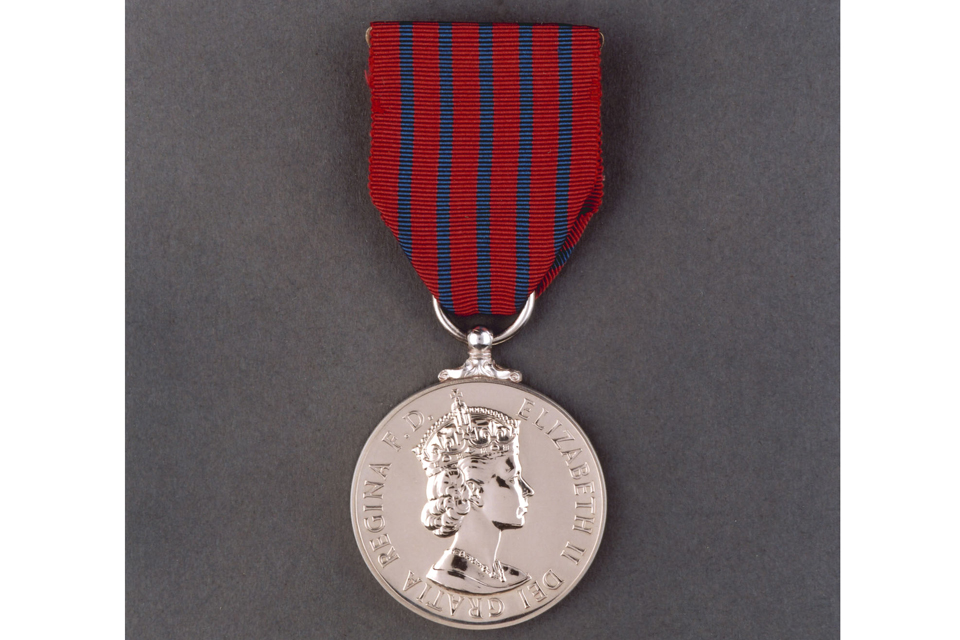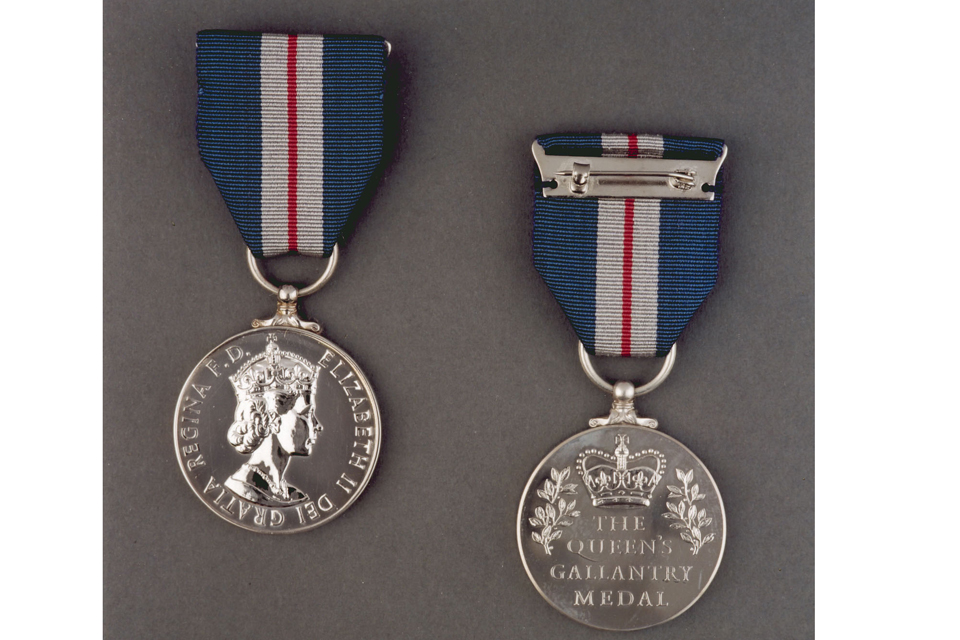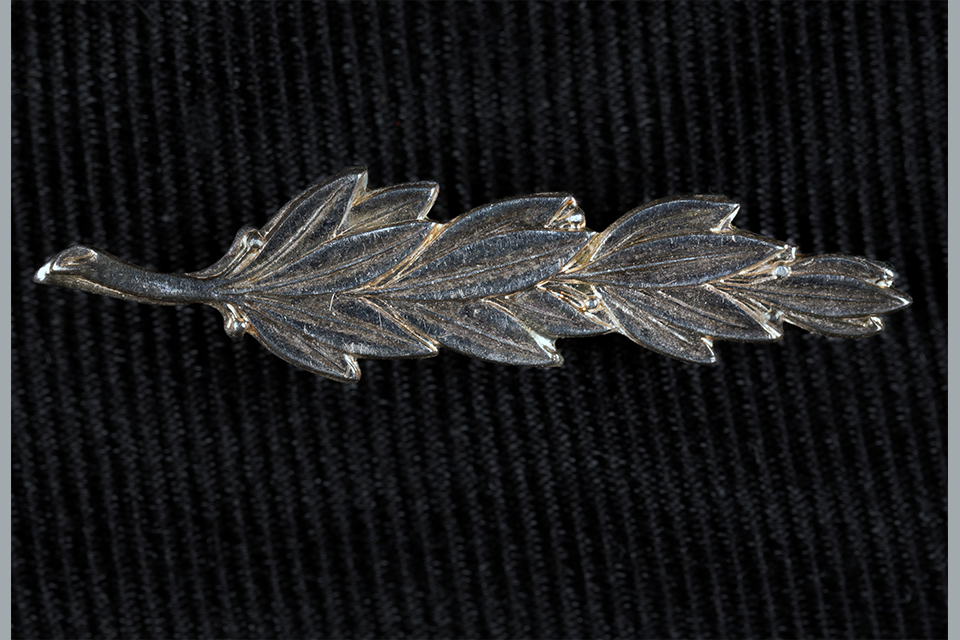Her Majesty The Queen is pleased to approve the following awards of the George Medal, the Queen’s Gallantry Medal and the Queen’s Commendation for Bravery. The names of those shown below will be published in The London Gazette.
George Medal

Richard STANTON, M.B.E.
Thai cave rescue, 26 June – 11 July 2018
Richard Stanton arrived in Thailand on 26 June at the request of the Thai authorities to help attempt the rescue of 12 junior footballers and their coach, who had been lost in the Tham Luang Nang Non cave complex in Chiang Rai Province since 23 June. Over the next three weeks he played a critical leading role in both the planning and execution of the rescue mission. His first significant contribution, on 28 June, was his reconnaissance dive upstream with John Volanthen through three completely flooded sections of passage to what later was designated as chamber 3. Here they assisted four Thai rescue workers who had been cut off by the rising water levels, which continued to rise.
Further exploration on 29 and 30 June had to be abandoned at chamber 3 as a result of strong water currents and poor visibility of around a metre. On 1 July, Volanthen and Stanton were able to travel 800 metres beyond chamber 3 to lay out guidelines; previous efforts by Thai Navy Seals had reached only 250 metres beyond chamber 3. The terrain was uneven and there were numerous blockages and obstructions to navigate. On 2 July, having reached 1500 metres beyond chamber 3, they surfaced to find the football team marooned on a ledge above the water.
Over the following days, Stanton participated in a number of dives to take supplies to the boys. Each trip was carried out in exceedingly difficult physical conditions, with a high degree of personal risk. The level of risk in reaching this far into the cave complex was underlined by the death on 6 July of a Thai Navy Seal, himself a professional diver, who was helping to supply oxygen to the children. Stanton then helped to lead formulation of a plan to rescue the team through diving. The Thai authorities preferred a non-diving option, but taking action was made more urgent as a result of forecast monsoon rains which might prevent any rescue effort or cause the boys to drown before a rescue could be attempted. As a result, a British-led plan was put into action between 8-10 July.
He was a leading member of thirteen divers and a group of Navy Seals who coordinated the rescue operation, bringing out the sedated boys one by one through to chamber 3 where an American medical team took over. The difficulty of the operation was heightened by the youth and physical condition of the children which required them to be sedated and immobilised, and then guided out by their diver through a route of multiple obstacles. Each journey took seven hours through the cave system and divers had to be taught to medically re-sedate the boys during the operation. The entire operation was carried out under the threat of monsoon rains and towards the end of the rescue, water levels began to rise, forcing a rapid exit by rescuers. In an operation of unprecedented complexity, all 13 of the trapped people were successfully rescued.
John VOLANTHEN
Thai cave rescue, 26 June – 11 July 2018
John Volanthen arrived in Thailand on 26 June at the request of the Thai authorities to help attempt the rescue of 12 junior footballers and their coach, who had been lost in the Tham Luang Nang Non cave complex in Chiang Rai Province since 23 June. His first significant contribution, on 28 June, was his reconnaissance dive upstream with John Volanthen through three completely flooded sections of passage to what later was designated as chamber 3. Here they assisted four Thai rescue workers who had been cut off by the rising water levels, which continued to rise.
Further exploration on 29 and 30 June had to be abandoned at chamber 3 as a result of strong water currents and poor visibility of around a metre. On 1 July, Volanthen and Stanton were able to travel 800 metres beyond chamber 3 to lay out guidelines; previous efforts by Thai Navy Seals had reached only 250 metres beyond chamber 3. The terrain was uneven and there were numerous blockages and obstructions to navigate. On 2 July, having reached 1500 metres beyond chamber 3, they surfaced to find the football team marooned on a ledge above the water.
Over the following days, Volanthen participated in a number of dives to take supplies to the boys. Each trip was carried out in exceedingly difficult physical conditions, with a high degree of personal risk. The level of risk in reaching this far into the cave complex was underlined by the death on 6 July of a Thai Navy Seal, himself a professional diver, who was helping to supply oxygen to the children. Volanthen then helped to lead formulation of a plan to rescue the team through diving. The Thai authorities preferred a non-diving option, but finalising a plan was made more urgent as a result of forecast monsoon rains which might prevent any rescue effort or cause the boys to drown before a rescue could be attempted. As a result, a British-led plan was put into action between 8-10 July.
He was a leading member of thirteen divers and a group of Navy Seals who coordinated the rescue operation, bringing out the sedated boys one by one through to chamber 3 where an American medical team took over. The difficulty of the operation was heightened by the youth and physical condition of the children which required them to be sedated and immobilised, and then guided out by their diver through a route of multiple obstacles. Each journey took seven hours through the cave system and divers had to be taught to medically re-sedate the boys during the operation. The entire operation was carried out under the threat of monsoon rains and towards the end of the rescue, water levels began to rise, forcing a rapid exit by rescuers. In an operation of unprecedented complexity, all 13 of the trapped people were successfully rescued, in addition to the four divers he rescued on 28 June.
Queen’s Gallantry Medal

Christopher JEWELL
Thai cave rescue, 26 June – 11 July 2018
Chris Jewell arrived in Thailand on 5 July to help in the rescue of 12 junior footballers and their coach, who had been lost in the Tham Luang Nang Non cave complex in Chiang Rai Province since 23 June. The children had been located on 2 July. Jewell was part of a diving team who brought supplies through the cave system to the boys, monitored their health, helped to map the route and helped to plan a method of rescue.
Two days later, after careful planning and once the Thai authorities had agreed to a diving rescue, Jewell was one of four core recovery divers in the team, who worked over the next three days to extract the sedated boys from Chamber 9, where they were stranded, back to chamber 3 where they were handed over to a military medical team. He was responsible for bringing out three of the boys. During Jewell’s final rescue trip, he lost his grip on the dive line and spent four minutes adrift with one of the young boys before finding his way to safety. The rescue was completed successfully on 11 July.
Jason MALLINSON
Thai cave rescue, 26 June – 11 July 2018
Jason Mallinson arrived in Thailand on 5 July to help in the rescue of 12 junior footballers and their coach, who had been lost in the Tham Luang Nang Non cave complex in Chiang Rai Province since 23 June. The children had been located on 2 July. Mallinson was part of a diving team who brought supplies through the cave system to the boys, monitored their health, helped to map the route and helped to plan a method of rescue.
Two days later, after careful planning and once the Thai authorities had agreed to a diving rescue, Mallinson was one of four core recovery divers in the team, who worked over the next three days to extract the sedated boys from chamber 9, where they were stranded, back to chamber 3 where they were handed over to a military medical team. He was responsible for bringing out three boys; including the first and last boy to be rescued, plus their coach. During the last rescue, the child’s allotted full face mask did not fit properly, so Mallinson had to make the critical decision to use a different type of mask of lesser security, rather than leave the boy behind. This entailed a much slower and more cautious exit, and increased the risk and complexity of the process. The rescue was completed successfully on 11 July.
Firefighter Wayne ANSELL, Hertfordshire Fire and Rescue Service
Firefighter Simon BEST, Hertfordshire Fire and Rescue Service
Crew Commander Daniel COOPER, Hertfordshire Fire and Rescue Service
Firefighter Ricky DAVIS, Hertfordshire Fire and Rescue Service
Firefighter Christopher MEADOWS, Hertfordshire Fire and Rescue Service
Firefighter Radosław Przemysław PEJKA, Hertfordshire Fire and Rescue Service
Simon WADDINGHAM, Firefighter, Hertfordshire Fire and Rescue Service
For rescuing elderly residents of a care home in Cheshunt, 8 April 2017
On 8 April 2017, there was a serious fire at a care home in Cheshunt, Hertfordshire, which had 35 elderly residents. Of these residents, 5 were centenarians, another was blind and 29 were immobile. Initially, the fire appeared to be in its early stages but once inside the property it became clear that the fire was travelling with great ferocity through the roof void covering the whole care home and time was of the essence.
Evacuation was not an option, so a full scale rescue was embarked upon. When the breathing apparatus crews entered the burning building the stairs, first floor landing and corridor were free from fire and smoke, however conditions deteriorated quickly as a result of the fire in the roof void escalating. Firefighters rescued residents by carrying them down the stairs and repeatedly went back into the building to rescue more and more people. Soon the first floor corridor become heavily smoke-logged and more debris was dropping down from the roof space. It was also evident that the temperature had increased significantly. Firefighters found casualties in every room, many in bed, unable to move due to disabilities. They had to use their own bodies as shields to protect the casualties as the flaming debris fell. Every firefighter repeatedly re-entered the care home, with little regard for their own safety, knowing that had they not, the loss of life would have been catastrophic.
Queen’s Commendation For Bravery

Joe ROWLANDS
For rescuing his father from drowning, 22 February 2018
On 22 February 2018, 13-year-old Joe Rowlands and his father Paul were kayaking from Lligwy beach (Treath Lligwy) to Dulas Island (Ynys Dulas), a distance of about 1.5 miles off-shore. En route, the kayak started to take in water, which resulted in the craft capsizing, leaving Joe and Paul in the water. They were unable to right and re-board the kayak. Paul instructed Joe to stay on top of the kayak while he attempted to push the craft to a rock to the east of Duals Island named Carreg Allan. After swimming for approximately 30 minutes, Paul began to suffer the effects of the cold water immersion and decided to abandon the kayak. His plan was for them to swim to Carreg Allan, approximately half a mile away.
By then, Paul had been in the water for some time and was struggling to swim. Joe reached the rocks of Carreg Allan but Paul lost consciousness before reaching the rocks. Joe became aware that his father was in difficulty and re-entered the water to swim approximately 100 metres to rescue him. On reaching his father, Joe discovered that he was face down in the water and unresponsive. He towed him back to Carreg Allan, dragging him up on the rocks to a place of safety. He then attempted to give him chest compressions, followed by mouth to mouth resuscitation in an attempt to revive him. He continued to perform resuscitation, after which his father started to breathe and regained consciousness.
By this time, the rocks at Carreg Allan were starting to be submerged by the rising tide. Joe realised the danger of remaining there and decided to move his father to Ynys Dulas Island, a distance of approximately 100 metres. On reaching Dulas Island, Joe proceeded to negotiate rocks on the shoreline in order to reach a stone tower where his father would be protected from the strong winds.
Joe and Paul were picked up by Moelfre Lifeboat, having been reported missing. They had spent about two and a half hours sheltering in the tower, during which Joe kept talking to his father to prevent him from drifting back into unconsciousness. They were transferred to hospital and diagnosed as suffering from severe hypothermia. Paul was in a state of atrial fibrillation (irregular and abnormally fast heartbeat). The Coastguard confirmed that had they not been found, they were not likely to have survived more than another half an hour.


